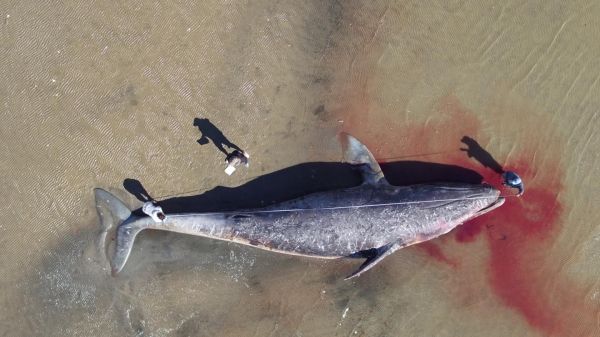It is now the third year that gray whales have been found in very poor condition or dead in large numbers along the west coast of Mexico, USA and Canada, and scientist have raised their concerns. An international study published this week in the journal Marine Ecology Progress Series, led by Aarhus University researcher Dr Fredrik Christiansen, suggests that starvation is contributing to these mortalities.
It’s mid-January 2021, and the first gray whales from the eastern North Pacific population have started to arrive in the breeding lagoons in Baja California, Mexico. Since the start of their southbound migration from their high latitude feeding grounds, several sightings of emaciated gray whales have already been reported along their migration route.
This has raised concern among scientists that the unusual mortality event (UME, an unexpected phenomenon during which a significant number of a marine mammal population dies), that started in January 2019, and which so far has resulted in 378 confirmed gray whale deaths, and possibly many more unrecorded, is entering its third year.
The gray whale - the longest migrating mammal
The gray whale (Eschrichtius robustus) is the only living species in the family Eschrichtiidae, in honour of the Danish zoologist Daniel Frederik Eschricht. Gray whales undertake annual migrations between feeding grounds in the Bering, Chukchi, and Arctic Seas, and breeding grounds from the Southern California Bight to lagoons along the Pacific coast of Baja California, Mexico.
Read more at Aarhus University
Image: A dead adult female gray whale stranded in Laguna San Ignacio in Mexico on the 17 March 2019. The whale was 12.8m in length. (Credit: Photo: Fabian Rodríguez-González)


